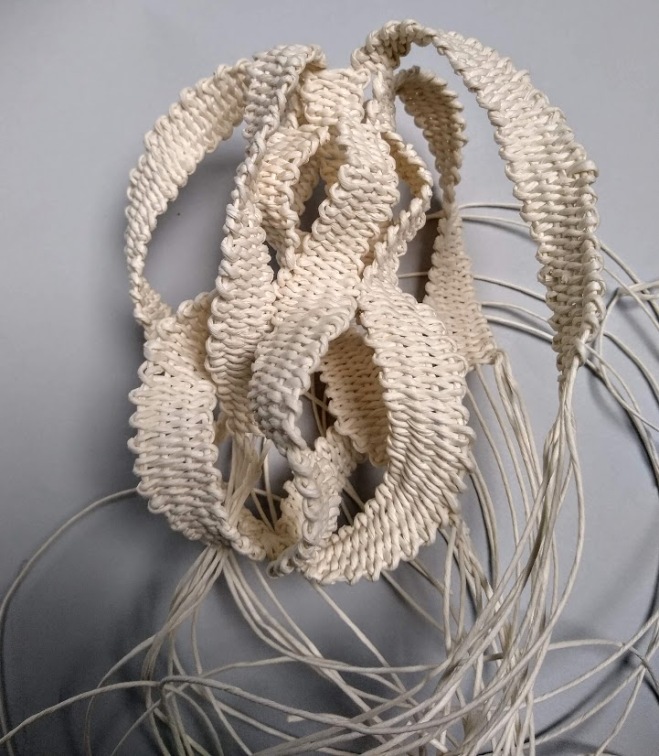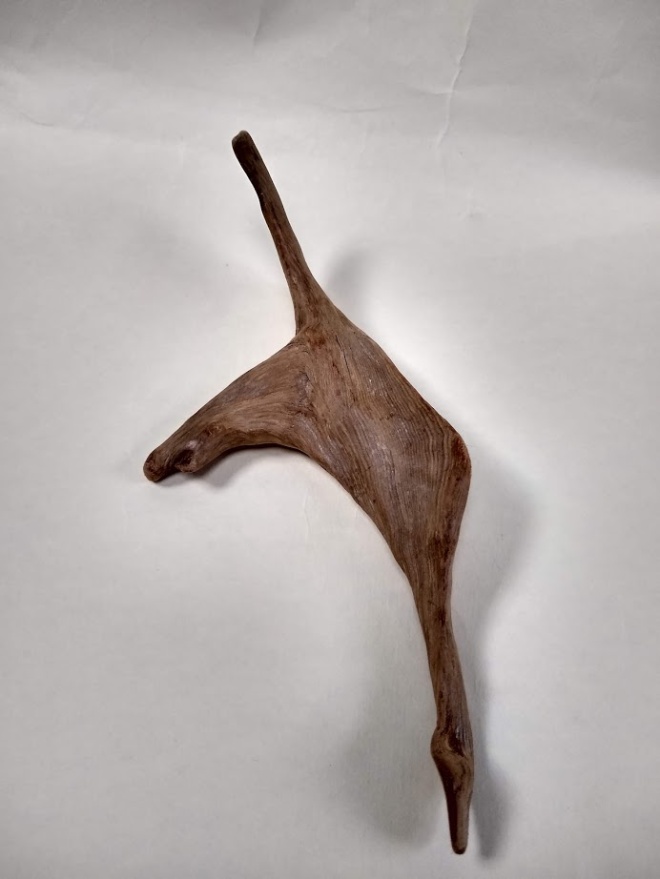My fascination with Möbius strips continues. Although the first triple-twist loop I made was rather small, I have a friend with very slim wrists, so it proved to be the perfect birthday gift!
I then went on to make a slightly larger version, this time wrapping with paper yarn, which produced a much stiffer piece than wrapping with wool.

Some of the yarn I dyed with indigo and onion skins.

What next? Obviously it was time to try interlocking Möbius strips (but with only one twist in each!). 😉
I did a paper mock up of how this might look.

Then I set to work. Previously I had used both wire and paper yarn as the core, but I now decided to try using wire on its own.

However, without the paper yarn, the wire on its own provided less grip for the wrapping, which tended to slip more. The piece also had less body. So I went back to including paper yarn in the core.

I also found that the initial slippier core meant that the parts of the strips that were supposed to be flat started to curl over at the edges. (This was probably also caused by too much tension when wrapping on my part.) Although this was not intentional, I actually liked the increased movement caused by the curling, so I didn’t try to correct it.

As a result, the final piece of interlocking Mobius strips doesn’t look anything like the paper mock up! But I’m OK with that.

And now for something completely different – well, almost
A couple of months ago I signed up for an online course with Australian basketmaker Catriona Pollard. The course was on making sculptural basketry with found wood, as I was really interested in finding out how to incorporate found objects such as wood into my work.
However, finding suitable pieces of wood was a bit tricky in the middle of London in August. There were alternatives I considered, but in the end I just started on the sculptural part, which involves twining.
I soon found out that twining with paper yarn produces a satisfying (for me) twist. So I’ve decided to go ahead without the wood for now and see what happens.

I have no plan for this – I just decided to start with five “arms”, like a starfish, and see how it developed. Sometimes they come together, sometimes they wind over or under each other, depending on how I feel. At the moment it’s fairly symmetrical, though it may not look like that in the photo.
Although twining is a different technique from coiling, I’m enjoying exploring how to achieve similar twisting and interlocking effects. Let’s see how it goes!





































